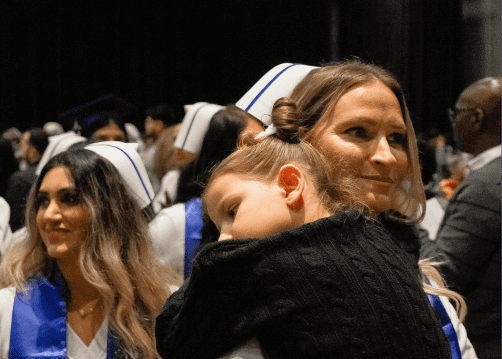Unique Ideas to Fund Your Healthcare Education
Date: July 6, 2022
If you consider returning to school after graduating from high school, you may wonder if your finances are as big as your dreams. Paying for college is something every student considers. Rest assured, financing a healthcare education may be more accessible than you imagined. Thankfully, many options are available to help students finance their educational dreams. Research is pivotal, and knowing where to look is vital. This section hopes to provide unique ideas to fund your healthcare education. It serves as an aid for researching the available federal, state, and private means to help cover your academic pursuits.
Before you begin your educational journey, meet with an admissions advisor at Gurnick Academy of Medical Arts. These professionals can help you learn more about your career options. Once an advisor knows you wish to move forward, they can help you begin looking at the financial-aid choices available to you. (More than 60 percent of our student body utilizes financial aid, so our advisors are keenly familiar with this process.)
Once you’ve decided on your college or learning center of choice, the next step is determining how you wish to finance the costs. If you are applying for financial aid,* you must complete the Free Application for Federal Student Aid (FAFSA®). You can apply online at the federal website. Be sure to complete the form electronically each year you are a student.
FAFSA applications have flexible deadlines and require recent tax information; plan accordingly and prepare your documents. In addition, multiple assistance programs help you advance your education, including grants, loans, work-study programs, and special scholarships.
Educational Grants
Grants are monies the government offers students who require financial assistance. Eligibility depends on student needs, the costs of one’s chosen program, and available funds as appropriated by Congress. Different grants are available, but the most common are the Pell Grant and the Federal Supplemental Educational Opportunity Grant (FSEOG). Unless one withdraws from an educational program or changes their enrollment status in a way that decreases eligibility, this type of grant generally does not have to be repaid.
Federal Loans
These are monies borrowed from the government and must be repaid with interest. A few different types of loans are available, and eligibility varies among them. The amount available for borrowing depends on one’s program, dependency status, and the costs associated with the program. To determine what options suit you, review reasonable salary expectations, calculate loan and interest costs, and budget an affordable payment plan. Know that a federal loan can be an excellent investment in one’s long-term future.
Federal Work-study Programs
Federal work-study programs provide part-time employment to help students cover educational costs. Monies are based on eligibility, individual need, and available funding. Work-study options are available through qualified public, private, or community service organizations. While work-study is unavailable on some college campuses, positions can range from administrative duties to in-program opportunities. Contact your campus of interest to find out more about work-study options or see if one may be right for you.
California Grants for Education
Gurnick Academy of Medical Arts is eligible to receive grants from the California Student Aid Commission (Cal Grant). To be considered, one must complete a FAFSA,® be a California resident, a US citizen, be enrolled at least half-time in post-secondary education (six to eight (6 – 8) units = 50 percent or half-time enrollment status),1 meet minimum GPA requirements, and complete the California Dream Act Application (CADAA). This grant type provides tuition and fee assistance. Generally, students do not need to repay the Cal Grant.
Private Loans
Banks and financial institutions issue personal loans instead of federal loans (offered by the government). For example, Sallie Mae is a private lender providing educational loans for both bachelor- and graduate-level students based on one’s credit profile or by evaluating a cosigner’s credit—plus the information provided on one’s application. Applying for a private loan with a creditworthy cosigner may help one receive a better rate. Personal loans, like federal loans, require payback on the loan’s principal plus interest. The interest rate is typically higher for private loans than for federal loans. Because of this, generally speaking, students should consider federal student loan options first.
Academic Scholarships
Scholarships can be viable aids in helping one offset educational costs. Sallie Mae’s scholarship search tool connects to a database of over three million award monies, totaling over 16 billion dollars, with daily updates and expansions. In addition, one may pursue lists of personalized scholarship opportunities matching unique backgrounds and specific needs. Future nurses may also search for nursing-specific scholarships at nursing.org’s scholarship database. The site offers scholarship opportunities and resources to help support nursing students in academic pursuits.
Part-time Work
While your education should be your main priority, part-time employment may help you better afford school. One should ensure a work schedule doesn’t conflict with one’s program and academic time commitments. However, even part-time work can help offset living expenses and unexpected semester costs. Additionally, a part-time job can provide valuable experience for one’s post-graduation resume.
You will be a step ahead in your education if you find work within a medical or clinical setting. Obtaining experience while working in a healthcare field may cause you to stand out and provide hands-on opportunities within the field, providing you with vast networking opportunities. Some work options you might be able to find without prior certification include roles such as a hospital/facility wheelchair transporter, dietary aide, medical secretary, orderly, caregiver, and medical scribe.
Keep in mind, unlike federal work-study programs, off-campus and part-time jobs may not be as accommodating toward one’s class schedule, labs, test times, or general academic commitments. Therefore, evaluate your time and commitments honestly before committing to a job. One benefit to an off-campus position is it can provide direct contact with patients, hospital staff, doctors, and other vital medical professionals. Therefore, these positions can be very beneficial to one’s professional future.
Pursue a Future in Healthcare
Figuring out how to pay for an education can be one of your most significant investments. Be sure to start right by speaking with advisors, saving money when possible, applying for financial aid, staying abreast of scholarships, finding service programs, and seeking opportunities to make paying for your learning more manageable and accessible.
*Financial aid is available for those who qualify.
Citations
1 n.d. “Cal Grant Equity Framework.” California Student Aid Commission. The State of California. (Accessed June 9, 2021).





